[ZZ] Basic Spanish
Sep 30th

Spanish alphabets
Hola:喂
Buenos días:早上好
Buenas tardes:下午好
Buenas noches:晚上好
Por favor:请
Gracias:谢谢
de nada:当对方说Gracias(谢谢)的时候,相当于不客气
Lo siento:我很遗憾
Perdon:对不起
Disculpe:抱歉,借光
China:中国、中国人(女的)
Chino:中文、中国人(男的)、中国的
Sí:是
No:不
guapo/guapa:靓仔/美眉
Amigo: 朋友
tú:你
bueno:好/棒
bravo: 棒极了
yo:我
Por qué:为什么
Qué:什么
Adiós:再见
Bienvenida:欢迎
Díos mío:我的天哪
Madre mía:我的妈呀
Es muy en la onda:酷毙了
Fantástico:妙极了
Bien:好
AAS/DPS Meeting -- Information for Students
Sep 28th
This guide is originally posted at http://dps.aas.org/meetings/attendees, and was revised for post here.
Adrienne Rowe created this document based on information from the LPL Grad Student Handbook on Conferences for the 2007 Fall DPS meeting in Orlando, FL.
Presentation Types
There are three kinds of presentations at the meeting: invited talks and lectures, contributed talks (oral presentations) and contributed posters.
Invited talks and lectures are larger sessions presented by a speaker specifically engaged for the meeting (meaning that the presentation was requested versus offered). Plan to attend these.
The majority of meeting content is contributed by members of the scientific community, and takes one of two formats. Oral presentations last from 5 to 15 minutes, depending on the meeting format, and related talks are grouped in sessions. Posters display research information on large boards or on poster-printouts, which people can inspect at their leisure, typically during coffee breaks between sessions and after the day's sessions. Poster presenters are available to discuss their posters during specific times that are listed in the meeting's schedule, but often also informally at other times between sessions.
Attire
Dress for comfort. You will be moving around a lot, often with an armful of stuff. An empty tote bag brought to a meeting will almost certainly be full for the trip home. Attire at the meeting is generally between business casual and casual (e.g. jeans are usually OK, and there is likely no need for you to wear a tie). Remember, though that you will be among your colleagues, so look presentable. Comfortable shoes are highly recommended, because you will be doing a lot of standing around. Wear your badge to all meeting events, including receptions and banquets.
What else should I bring?
Again, an empty tote bag will be useful, as will a notebook and pen. Depending on location, a swimsuit and sunscreen may be useful. Sunglasses are always in season. Add a camera if you will be sightseeing.
Most meeting venues provide several public-use computers with Internet access, so you could probably get away without a laptop.
Of course, if you are presenting a poster, bring your poster, (thumbtacks are usually provided, but check) and any notes you need for answering questions.
Planning for the meeting
Plan each day in advance. With so many interesting talks, it can be overwhelming to decide where to start each morning. Study the program ahead of time and decide in advance what sessions you want to attend. where to start each morning. Study the program ahead of time and decide in advance what sessions you want to attend.
If you decide to attend talks at simultaneous sessions (e.g., the first half of one session and the second half of another), choose a seat in the back of the room so you can exit discreetly.
If you are presenting a poster or talk, be sure to build in time to prepare. You'll be surprised how quickly the days pass.
While it's not a universal law, some people can feel burnt-out by having gone to too many talks by the third or fourth day of the meeting. Pace yourself.
Almost everyone in our field is friendly. Don't be shy about going up to somebody and asking them about their poster or their talk. However, don't be deflated if somebody you've met before doesn't remember you. Many people have trouble remembering faces and/or names.
If you are giving a poster presentation, be sure to stand by your poster at your scheduled time. Note though that while many people will walk by and gaze at your poster, only some small subset will actually want to interact with you and discuss it. Again, don't be deflated by this—it's normal. There is no need to start your poster spiel with everyone that drifts by your poster.
Speaking of the poster itself, because of the social dynamic of the poster session, it is highly recommended that your abstract and conclusions/summary be readily findable and readable to someone standing a few feet away. A large fraction of the people that see your poster will only want to spend 15 seconds getting the upshot of your results. This is not because your work is poor or because you're new, it's because there are just lots and lots of posters to see! Also, you want these drifters to be able to see your results even if you are at that moment with a cluster of two or three people engaged in deep discussion right in front of the poster.
For many attendees, the meeting means that they get to see old friends that they see normally only once or twice a year. For this reason, it can be difficult to break into a social group. Don't worry, this is normal. An obvious manifestation of this phenomenon happens right before lunch and right before dinner, when people sort themselves into groups to go get food. Don't feel slighted if the person you're speaking with tells you that he/she has other food plans with somebody else (and that implicitly you're not invited). It simply takes time to integrate one's self into the society.
大气探测实验室学术讨论会第1期
Sep 26th
继续将“Dream Lab”计划付诸行动,希望通过定期举办学术讨论会,能将国外自由交流的学术风气引入实验室,就如同朱老师的505小组对全国青少年天文活动造成的影响一样。9月26日,顺利举办了第1期,有十几位同学参加,效果挺令人满意。
实验楼北座A502 大气探测实验室
20:30-20:40 Introduction
20:40-21:10 A Review of 2009 Total Solar Eclipse Forecast Campaign
21:10-21:40 Review and Discussion of Typhoon Koppu
计划以后每个月举办1-2次的类似活动,带动大家进行讨论,算是为学院学术氛围的培养尽一份绵薄之力。

AAS/DPS年会:整装待发
Sep 25th

我的会议海报,待共同作者过目后即可印刷
再度收拾行装,准备上路!目标:美属波多黎各自由邦法哈多镇El Conquistador风景区,内容:参加第41届美国天文学会行星科学分会年会,并作题为"An Overview of Lulin Sky Survey"的海报展示。报告时间:大西洋时间10月7日16:30-18:30(即北京时间10月8日4:30-6:30),报告地点:Caribbean Ballroom(没错,所有的报告都是在舞厅里举行……),展示时间则是10月5-8日。
本来以为海报一两天就能搞定,叶赫那拉也说拿PS做便可,没想到光是文本就写了3天,之后第4天用于发现:PS很难拿来做科研海报,只好弄了一个InDesign,幸好上手很快;忙到第6天,在XF的参谋下终于做好了,结果得意之时,顺手Google了一些以前DPS会议的海报,才发现我的文本又长又难懂,一怒之下,打掉重来。不过这次就驾轻就熟,到了第7天,基本完工,再加了一些装饰,于是总算“独立自主”地把海报做出来了。
旅行安排(均为当地时间):1日到香港;2日上午的航班飞16个小时到纽约转机,再飞5个小时到圣胡安;3日在圣胡安倒时差,顺便看看城市;4日,蹭Harris等泰斗级科学家的车去法哈多;5-9日在法哈多开会;10日去大名鼎鼎的阿雷西博天文台(to 外行朋友:地球上最大的射电望远镜,就是用来找外星人的,据说在电影里出镜率很高的哟);11日一早飞回纽约,接下来两天在纽约闲逛,13日晚上到卡内基音乐厅听费城交响乐团的音乐会(世界顶级的音乐厅+美国三大乐团);14日上午坐火车去波士顿,逛哈佛/MIT还有国际小行星中心,再见见姐夫大人,15日晚上的夜班车去华盛顿;16日逛华盛顿,17日逛费城,18日上午的火车回纽约,下午上飞机,再飞16个小时,19日晚到香港。
America,我来也~~~
逍遥
Sep 23rd


全景图 实验室窗外风景
最近忙得太不亦乐乎,以至于又两个星期没更新,谨向各位来串门的朋友表示歉意。打开博客的统计,看到朋友来访的足迹,是很让人高兴的。不过,这感觉比较奇怪—— 就好像你经常不在家,但时常有人来访,在门上贴了张小纸条,但又不见其人一样。总之,为了尽量减少见人来访却无礼以呈的愧疚感,博客还是要时常打理的。
到了大四,学分已经修够,事情也越来越多,干脆把所有课都退了,让大学的最后一年变成真正“独立自主”的一年,这种体验,或许以后很长一段时间都不会再有了。回到学校的第一晚,寝室30度以上的高温让我简直是夜不能寐,第二天索性把铺盖搬到了实验室,从那以后的好几个星期我差不多“以实验室为家”了。

“实验楼外大街”
嘉子坦言她不喜欢实验室,但我每次都会兴致勃勃地反驳说,“我们的实验室和你们的实验室不一样”。我们实验室位于实验楼最高一层,一共有4个房间,其中两个大约100平方米, 另外另外两个大约10平方米。当然,还有附属的大约几百平方米的露天场地,以及大学城制高点之一—— “看风台”。我一般呆在其中一间100平方米的大气探测实验室。它的确不怎么“实验室”:几张实验桌,仪器寥寥,却宽敞明亮,从中央空调到微波炉电冰箱,应有尽有。从面朝北面的窗户看去,便是珠江水道官洲岛,只要天气晴朗,广州市区的高楼大厦和更远一点的白云诸峰便可尽收眼底,可谓“风景这边独好”。我做了一张在观测场看到的全景照片(其实没有360度,只有大概150度,而且也有一些瑕疵,还请各位拍砖),各位不妨也体验一下在这样风景环绕下工作的感觉。
实验室虽然有弹簧床,但我还是喜欢垫上床垫睡地板,因为实验室很大,而且也很干净,可以毫无顾虑地随意翻滚。早晨6时,从窗子里射入的阳光便将我唤醒,基本无需闹钟骚扰美梦。假如天气晴好,洗漱的时候便可透过窗子欣赏夏日清晨的广州:一切寂静,金光慢慢涂遍整座城市。与闹哄哄的傍晚大不相同,这一切只属于我一个人。
6点半,在安安静静的校园里,骑着单车去游泳。戏水罢了,回宿舍洗澡吃早餐的时候,可以欣赏到典型的八九点钟大家去上课的热闹场景。当然,现在我只是站在旁边的看客而已。我也要“上班”——老板是自己。慢悠悠地骑车晃过校园,差20分钟9点到实验室便可,大声朗读一会英语(考完托福以后会变成读诗词,我保证!),之后开始一天的工作。
从实验室到饭堂要走5-7分钟路(具体时间取决于我是吃饭前还是吃饭后),可以沿着河畔草地上的小径走,看看沿途上的小树是不是又有花开了。尤其是在傍晚去吃饭的时候,气温适宜,光线柔和,可是件很惬意的事情。

工作台,转头即可见羊城美景
实验楼斜对面是保存较好的一小片森林,白天可听鸟叫,晚上可听虫鸣,偶尔还会有倔强的蜗牛一口气爬五层楼,在实验室的窗上爬来爬去。实验室里还有几只蛐蛐,它们最爱干的事情就是站在浸泡在水中的日照纸上,好像大船的船长一样,神气活现地立着,一动也不动。最害羞的动物可能是一只小灰猫,它从来不在上课时间出现,只有在早上六点多钟或者晚上八九点的时候,才偶然能撞见,远远地冲着你叫;往它走几步,便又跑开了。我到现在还没弄清楚它住在哪儿。
晚上九点半,当实验楼大多数灯光都已熄灭的时候,我便开始拉琴。实验室方正又空阔,站在正中间拉琴,那种辉煌的音响,真让人百听不厌,配合着窗外不间歇的虫鸣,似乎让人来到了柏林瓦尔德尼森林剧场,面对着千万千万棵树,独自一人静静地拉琴,不似仙境,胜似仙境。琴声远逝,22:30,我又回到了那舒舒服服的地床上,在依然不停歇的虫鸣声中进入梦乡。高楼之上,绝无打搅,一觉到天明。
这样的生活啊,我看,用不着更多的形容词,逍遥二字足矣。叶子者其真逍遥也!时己丑年八月六日。
TY Morakot seriously affected Lulin Obs.
Sep 12th

Landslide at Mt. Alishan area (by Mr. Hsiung from Lulin Obs.)
I got a sad email from Lulin Observatory's director Hung-Chin Lin on September 9 reporting Typhoon Morakot's destructions at central Taiwan and affectiveness at Lulin Observatory. Morakot, a Catagory-2 typhoon, hit Taiwan around August 8 and caused about 700 fatalities and a damage of $443,000,000. According to Lin, who quoted the report from local transpotation and electrical authorities, the only two roads to Lulin (Provincial Road No. 21 and No. 18, including electricity and communication lines) both suffered "very serious" damages due to lots of landslides along the way and a fully recover may require 1-2 years at least. The observatory staffs were stucked for 10 days at the observatory until being rescued by helicopters. Thankfully, the observatory itself does not suffer major damages, but Lin suggests it will take more than two months to get the telescope working again, and it may take at least a year to get things back to normal.
I have upload a few images of the road conditions, copyrighted by those who took them.
Updated Sept. 19: I noted Dr. Lakdawalla from the Planetary Society has monitored this post at her Twitter -- thanks for her attention. I may added a few introductions of Lulin Observatory for new-comers. Lulin Observatory is the only observatory in Taiwan that with fully operation on both research and education. It's also where Lulin Sky Survey (once had been the only asteroid program in East Asia/Western Pacific) and Taiwan-America Occultation Survey (TAOS) conducted. Astronomers should be familiar with one of its best-known discoveries -- Comet Lulin (the naked-eye comet in early 2009). I'm no longer with Lulin Sky Survey as it had been terminated about six months ago, but I do keep contact with the friendly faculties and staffs there since the excellent collaboration we made over the last three years and occasionary use the 1-m telescope there to do some research on asteroids. The newest report I got this weekend is that the observatory can be accessed by staffs again since an emergency way has just been completed.
- Destructed properties (by Mr. Hsiung from Lulin Obs.)
- Drown truck (by Mr. Hsiung from Lulin Obs.)
- Landslide on Provincial No. 18 (by Mr. Hsiung from Lulin Obs.)
- Landslide at Mt. Alishan area (by Mr. Hsiung from Lulin Obs.)
- Landslide on Provincial No. 18 (by Mr. Hsiung from Lulin Obs.)
- Provincial No. 18 way to Lulin (by Mr. Hsiung from Lulin Obs.)
- Provincial No. 18 way to Lulin (from Taiwan Transportation Authority)
- Provincial No. 21 way to Lulin (from Taiwan Transportation Authority)
- No. 162A Country Road damages (from Taiwan Transportation Authority)
美国B1签证经历
Sep 10th
今天终于拿到了据信是最难拿到的国家的签证,鉴于网上的攻略也不太多,而且广州领事馆的就更少了,就在这里把自己的经历写出来,以飨来者。
我的情形:美国天文学会的会议邀请,目的地是波多黎各,费用由对方和中大出。尽管这一情形好像比较“根正苗红”,但因为网上拒签的例子不少,我不敢怠慢,准备得非常仔细,清单如下(用英文写的):
- 邀请函
- 个人简历
- 中大的出国批准函
- 学院的拨款证明
- 论文摘要
- 与会议主办方的通信
- 会议简介和日程
- 旅行日程
- 两位教授的推荐信(推荐对方给我资助的)
- 课题身份证明
- 旧护照(有到日本和澳洲的签证)
- 媒体报道(专门只选英文媒体的,NASA的报道放在最上面)
- 户口本、学生证、存折、房产证
把以上材料分成了三个大类:General, About the meeting, Additional materials,让签证官可以一目了然。估计会有熟门熟路的哥们说这也太夸张了…… 不过这个会议对我来说很重要,而且网上也有不少情形是说“签证官问都不问就拒签的”,因此我只好死猫当老虎,做足一切准备。
其他准备工作:买电话卡申请时间。美国人实在生财有道,签证费¥906不算,居然连个预约都要收个几十块钱,不过电话服务的确很赞。电话预约大约要花4分钟,我预约到十几天后的7:30(准确说是2009年9月10日)。照片的话,照着领事馆给出的步骤,自己拍一张都行,我还是拿手机自拍的。到中信银行交签证费,只能用现金,要记住自己的护照号码(或者带上也行),收据第一联撕下来拿透明胶贴DS-156上,或者拿回形针别着也可以,第二联自己留着。
我家到领事馆步行5分钟多一点儿就到,早上7:15到的时候居然排了一两百号人(光是签证费就20万了!),7:30、8:00和8:30的各一列。建议大家尽量申请7:30的,我只花了一个小时多一点就完事了,大部分时间都是在等。坐扶梯上5楼,路上保安核对了2次名单。水要丢弃,随身物品有得保管,过了安检以后就进了签证厅。在1、2号窗交表格。DS-156上要写中文翻译以及电码(奇怪的是好像领事馆的网站上并没有说到这个,也可能是我没看仔细)。等叫名字按指纹。收表和按指纹的都是中国人,之后去排队等着面试。
现场和银行基本一样,也不觉得防弹玻璃很厚。我居然排在第一个,于是一美国大妈举手示意说我可以过去面谈了。
- 我:Good morning Madam! (就如同我之前和虾说的,“我很久没练口语了,见到老外就像饿狼见到食物一样”。据说签证官可能会和你说中文,所以我抢先一步和她说英文)
- 签证官:Good morning.
- 我:Here is my general materials and my checklist.(递材料)
- 签证官看清单,露出满意的样子,然后开始说话,但声音太小,我后来才意识到她忘记开mic了。
- 我:Excuse me, could you please speak louder? I can't hear you. (我说得和她一样快,不过应该是她说得比较慢)
- 签证官:Why! Why!
- 我:Why do I go to Puerto Rico? Yes. I'm going to attend a scientific meeting.
- 签证官点头。
- 我补上一句:In astronomy.
- 签证官又点头,看清单又看材料,敲键盘。
- 签证官:Do you have an invitation letter?(其实我差不多是猜的,因为她忘记开mic,而签证厅里又比较吵)
- 我:Yes. Do you need an original copy? 不等回答,翻出邀请信原件交上去。
- 签证官看邀请信:What do you present in the meeting?(又是"Pardon"了好几次)
- 我:Poster. Would you like to see the abstract? 翻出来交上去。
- 签证官:So it is a telescope in Taiwan?(这句话我听到了)
- 我:Yes. I'm the principal investigator of the program. (签证官笑了,看上去很满意)
- 签证官:Old passport?
- 我:Yes. (翻出来交上去)Contains visa to Japan and Australia. I have another older passport but I... it was taken by the... the... (两手比划,一时间想不起公安局怎么说)the office. (签证官又笑了)
- 签证官摊开材料,啪啪地敲键盘,似乎一时间想不出有什么可问的。
- 过了好一会儿,签证官要问我什么时候去,但我又听不见,最后她说:When! When!
- 我:When shall I go to the meeting? Yes, October 4th to 9th.
- 签证官点点头,抓起我的护照(心头一紧,担心她拒签),然后顺手抽出"approved"的蓝条,哈哈哈,完事喽!
- 我:Is it okay? Thank you. Oh yeah, by the way, the microphone seems not working.
- 签证官又笑了,转过身去按了一个什么东西,然后扩音器里传出很标准的普通话:“喂?……喂?”
心得:我觉得网上很多不过的,要么是材料没准备好,要么是申请原因含混不清。我没有看其他人申请得怎么样,但同行有一个中大CEO的什么团(汗,又是中大的),二三十号人只有一个人被拒,签证官看起来也是很和蔼的。个人感觉:除了少少的运气成分(作为一个超级大国,无法想象美国会有混乱不堪的签证政策),主要就是材料要准备充分、完整,不要造假,面谈的时候和聊家常一样用不着紧张,通过的概率还是很高的。
最后说一句,记得带现金去,因为寄签证要交钱。我既没带钱又没带卡,结果只好跑回家拿钱,好好的锻炼了一下。
部分参考资料:
- 美国驻广州总领事馆指南,http://guangzhou-ch.usembassy-china.org.cn/how_to_apply.html
- 美国B1/B2签证准备工作及操作程序(广州),http://www.hicafe.cn/wiki/viewwikientry.do?entryid=288
- 如何申请赴美签证(北京),http://zhidao.baidu.com/question/67583754.html
- 学术会议B1签证经历,http://www.taisha.org/bbs/thread-1325331-1-1.html
访东坡书院记
Sep 4th

全景图 书院内陈置
初稿 二十一年九月三日 修订 二十一年九月四日
己丑年六年廿一,叶子访儋州,沿路西北行而得中和。夫中和者,古儋州城也;宋绍圣四年,苏轼贬琼州,世传居城外桄榔庵,现经复修善置,谓之曰“东坡书院”。叶子固仰东坡,故往而期拜。
由中和东行百余步,纵横陇亩间,得红墙,远观似堡,森森兮,不若书香门第;愈近见门,四下无人,但有一碑曰“东坡书院”,方知此乃所寻也。虽森然不若所期,思此亦东坡故居耳,缓步而入。不足七步,忽闻大喝“买票!买票!”见一大汉,手提扫帚,不知何处奔出,擎一小牌,上书“参观十五元”。叶子不悦,予之。大汉点罢钱财,复去而打扫。院内亦可罗雀,惟大汉与售“苏公香”之小贩二三人。正堂内陈东坡教书之像,如小儿之画,木然可怪;古碑二三具,所存不善,文亦漫灭;祠之所陈,多乃今人之书也,不乏高官之所幸,而古迹甚稀。叶子所感无甚可体悟者,遂出而返。
归途,有乡人搭讪,自言居儋州,问曰:“汝何而来?”叶子对曰:“游而览者。”曰:“儋州者,无甚游览之处。古时一大官,不知何许人,贬来此地,其居经复修善置,曰‘东坡书院’,名似远扬。吾尝游之,无他,惟一小院耳,举吾居而不如。有传乃儋州之宝,其竟如此,实可笑也!”叶子默然。其后,虽途冗长,不予与对。
古人云:夏虫不可与语冰。吾观其夏虫之人也多,而其识冰之人也少。虽闻道有先有后,然东坡故人不识东坡高名,其可笑也欤?或曰,“不笑不足为‘东坡’也”。时己丑年七月望。
- 不准进来和我照相!违者罚款100元!
- 上香苏公每柱五元
- 全景图 书院内陈置
- 全景图 书院之塘
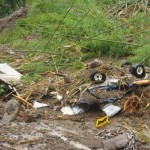


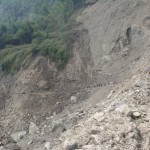


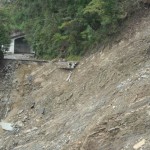
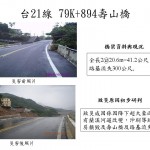
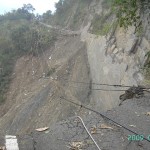

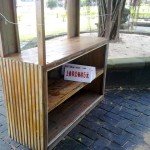
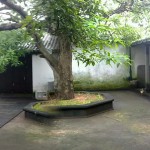
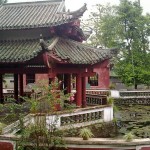


























最新评论 Recent Comments